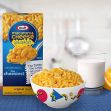Consumers looking for butter substitutes that are lower in fat and calories and less expensive than the real thing can find many choices at the grocery store. There are soft ones, whipped ones, liquid ones and spreadable stick ones. But one of them stands out, not necessarily because it is healthier or tastes better than its competitors, but probably because its name is cleverer. It’s called “I Can’t Believe It’s Not Butter!” (hereafter Butter!), and a group of buyers challenged the product in court, claiming it was mislabeled. They lost.
Lead class action suit plaintiffs Kym Pardini and Carrie Wood, who sought to represent a “nationwide class of consumers,” sued Unilever United States, the Butter! manufacturer in the United States District Court for the Northern District of California in 2021, claiming the product’s label misrepresented fat and calorie counts because they were based on “artificially low serving sizes.” Judge Jeffrey S. White ruled that since the product was a spray, its label complied with federal law. Plaintiffs appealed.
In a 2-1 decision, authored by Circuit Judge Daniel A. Bress on April 18, the panel affirmed White’s dismissal based on the “express preemption by the federal Food Drug and Cosmetic Act (FDCA).” Justice Carlos F. Lucero, sitting by designation, dissented.
Bress began his opinion by recalling the nineteenth-century legal battle over whether a tomato is a fruit or a vegetable. He called the case currently before the Ninth Circuit “a modern iteration of this legal genre,” as the court had to determine whether Butter! is a butter or a spray. While informing readers that a tomato was found to be a vegetable, Butter!, he wrote, “is a spray.”
Butter! is shorthand for a wide variety of margarine and vegetable oil spreads that come in many forms. The spray version, at issue here, was first marketed in 1994, with a clever name designed to convince consumers that “the product tastes so much like butter that one could not believe it wasn’t.” It was delivered to foods for “topping or spreading” via a “pump action squirt bottle.” Its label stated it had zero grams of fat and zero calories.
Plaintiffs found this information misleading because it was based on “unrepresentative serving sizes” which are too “artificially small” to “reflect customary usage.” They say they were confused and frustrated when they learned they had to use more spray to get a “comparable buttery flavor.”
The Ninth Circuit opinion points to the “vast federal regime governing food labeling.” In brief, this is how it works. The FDCA makes uniform rules that provide nutrition information per serving size that must be stated on product labels. States cannot make any laws that are not identical to federal requirements. The issue in this case is whether the Food and Drug Administration’s (FDA’s) rules for “appropriate food serving sizes” are valid for Butter! when it is in spray form.
The FDA defines a serving size as a standard “amount of food customarily consumed (according to food consumption surveys) per eating occasion by persons 4 years of age or older which is expressed in a common household measure that is appropriate to the food.” Examples of common household measures include teaspoons, tablespoons, pieces, etc.
Bress next applied these measures to butter and butter substitutes. Since it is a spray, which does not translate to a common household measure, the Court had to decide whether to classify it as a butter, oil, or spray since serving sizes would vary by form. He then explained that since the product is “dispensed in the form of droplets, emitted from a mechanism that allows the product to be applied in that manner,” it is a spray. This conclusion led the opinion to say, “The notion that Butter! Spray could be housed under the FDA’s legal classification for “butter,” meanwhile, is simply implausible.”
Plaintiffs argue that to match a tablespoon of butter, 40 sprays of Butter! would be required, but they failed to provide information that would classify Butter! spray as a butter substitute. Therefore, Bress wrote, “Plaintiffs have not pleaded facts that would fully satisfy th(e) technical definition for a product “substitute.” Since Unilever, the opinion concluded, “…properly categorized Butter! spray as a “spray type” fat or oil, the serving size on its nutrition label complied with federal law.”
None of plaintiffs’ arguments were found persuasive, and the precedent that would be set if their challenge to serving sizes were to be accepted would violate FDCA's rightful preemption rights. The opinion ends by telling plaintiffs they may raise the issue of Butter! spray serving sizes with the FDA.
Or plaintiffs could just stop buying I Can’t Believe It’s Not Butter! Or maybe just spray it fewer times.






